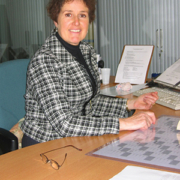A breakthrough in timely ovarian cancer diagnosis?
While globally ovarian cancer is the eighth most common cancer in women, in the developed countries (with the exception of Japan) the disease is much more prevalent. In Europe it is the fifth most frequently diagnosed cancer in women, with an average lifetime risk of 1 in 70, and in both Europe and North America the disease accounts for over 5% of all female cancer deaths. In addition, unlike with most other cancers, the five year survival rate of only 45% has barely improved in the last 30 years. This poor prognosis is largely due to the non-specific symptoms, resulting in diagnosis at Stage III or IV when the tumour has already metastasized. But if ovarian cancer is diagnosed early, the five year survival rate exceeds 90%.
Much work in recent decades has concentrated on finding a simple screening method that would allow more timely diagnosis; so far none has had a significant effect on mortality. An assay for the most frequently used biomarker, CA125, was developed around 30 years ago. Normally elevated in the serum of patients diagnosed with symptomatic ovarian cancer, CA125 is ideal in disease management, but its use to enable early disease detection has remained controversial. Specificity is very limited as the serum level is raised in several benign conditions (such as endometriosis) as well as in other cancers. In addition sensitivity is only about 50% in patients with Stage I or II disease. More recently human epididymis protein 4 (HE4) has been advocated as a useful marker for ovarian cancer detection. Its level is not elevated as a result of benign pelvic disease so its specificity is higher than CA125, but levels of HE4 are also raised in some other cancers. Recent work on ovarian cancer screening has suggested that screening utilizing a combination of these two biomarkers may be the best approach for early disease detection.
Now exciting preliminary data from the Anderson Cancer Center have just been published. Over 4,000 women, healthy at the start of the study, were classified into three risk groups based on a mathematical model- the ROCA- incorporating their age and CA125 serum level. Follow-up over eleven years was dependent on the evolving perceived risk. The US researchers were ‘cautiously optimistic’ about this approach, but await results from a similar trial in the UK, involving more than 200,000 women, which will be available within two years. Hopefully, though, screening using the ROCA will lead to more timely diagnosis and thus a better survival rate for ovarian cancer patients.



